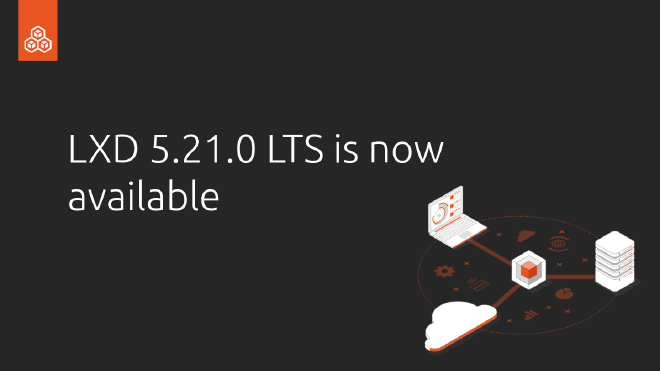LXD 5.21 LTS Debuts: Web UI Default, OpenID Support

LXD 5.21 LTS has been released, introducing several significant updates including the enablement of the Web UI by default, an updated authentication and authorization mechanism with OpenID Connect support, and a change in the version numbering scheme. This release marks the fifth LTS version of LXD and will receive support for five years, until June 2029.
Key Changes in LXD 5.21 LTS
-
Version Numbering Scheme: The release introduces a new version numbering scheme, moving away from the n.0.n format to a more logical sequence that reflects the culmination of work over the LTS cycle, with this release being 5.21.x.
-
LXD UI Enabled by Default: The LXD graphical user interface, now considered production-grade, is enabled by default in the LXD snap. Users must explicitly enable the external listener by setting
core.https_address. -
Authentication and Authorization Revamp: The release introduces OpenID Connect for authentication and advanced mechanisms for fine-grained authorization, enhancing security and access control.
-
Storage Enhancements:
- Object Storage Support: LXD now supports object storage, adding the concept of storage buckets with a dedicated command (
lxc storage bucket) and APIs. It utilizes Ceph’s rados gateway for the S3 API and MinIO for other storage drivers. - Dell PowerFlex Support: The addition of Dell PowerFlex support offers another remote storage option for enterprise use cases.
- Object Storage Support: LXD now supports object storage, adding the concept of storage buckets with a dedicated command (
-
Virtual Machine Improvements:
- Live Migration: Improved VM live migration process significantly reduces downtime during migrations.
- AMD SEV Support: Virtual machines can now utilize AMD SEV for memory encryption, enhancing security.
- Non-UEFI Support (CSM): Support for non-UEFI VMs addresses compatibility issues with legacy firmware.
- ISO Volumes: Custom storage volumes can now be uploaded as ISO image files, simplifying the installation of custom operating systems.
-
Instance Placement Scriptlet: A new feature allowing users to provide a scriptlet for more deliberate instance placement on cluster members.
-
Cluster Auto-Healing: Enables automatic recovery from a cluster member failure for Ceph-backed instances, controlled by
cluster.healing_threshold. -
Shiftfs Support Removed: Following the removal of shiftfs from the Ubuntu kernel, LXD has also dropped support for shiftfs, advocating for idmapped mounts as the preferred method for UID/GID mapping.
This release represents a significant step forward for LXD, particularly in clustered environments, and underscores Canonical’s commitment to improving LXD’s robustness and feature set. For more information, detailed documentation and guides are available on the Ubuntu documentation site.
There is also Incus, a fork of LXD, emerged in response to Canonical’s decision to confine maintainership to its employees. This move sparked concerns among developers, leading them to establish Incus as a community-driven alternative within the Linux Containers ecosystem.